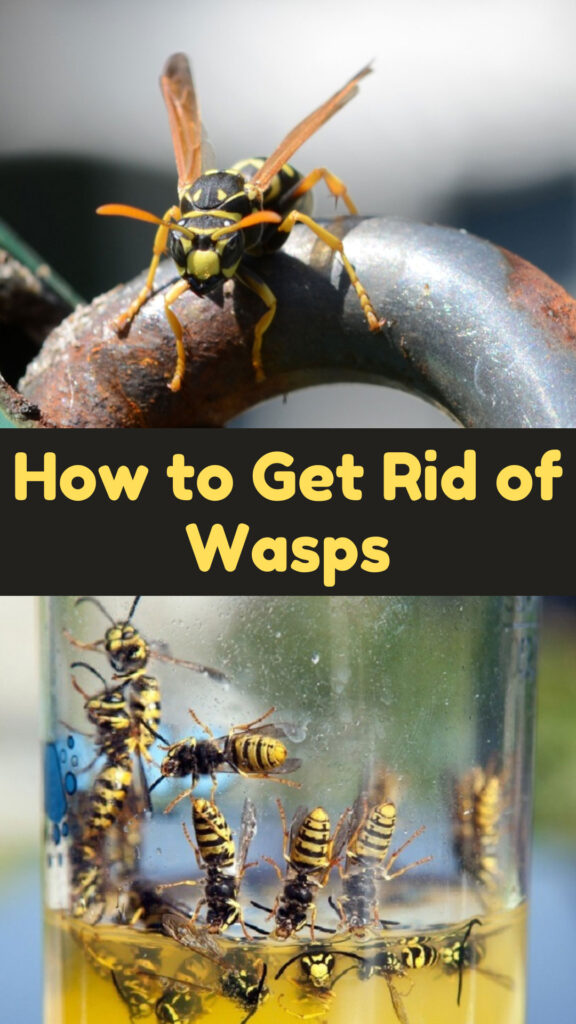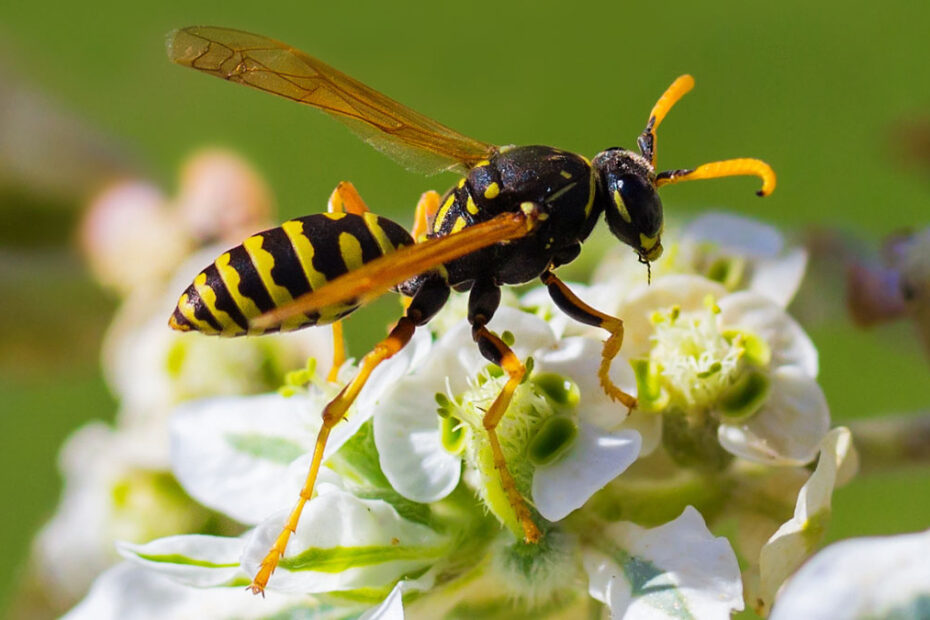Wasps buzzing around your home can turn a peaceful afternoon into a stressful ordeal. These stinging insects are not just a nuisance; they can pose serious risks to you and your family, especially if someone has an allergy. Understanding how to get rid of wasps safely and effectively is crucial for maintaining a comfortable and safe living environment.
Key Takeaways
- Understanding Wasp Behavior: Learning about different types of wasps and their behaviors is essential for effective management and control.
- Preventive Measures: Sealing entry points and removing attractants can significantly reduce the likelihood of wasps invading your home.
- Natural Remedies: Using essential oils and homemade traps provides safe and chemical-free ways to control wasp populations.
- Chemical Solutions: Insecticides and professional extermination services are effective for eliminating large or stubborn infestations.
- Aftercare and Safety: Proper nest removal and preventive measures are crucial to avoid future wasp issues and maintain a secure living environment.

Understanding Wasps
Wasps can cause significant disturbances and risks, especially for individuals with allergies. Knowing about their types and behaviors helps manage them effectively.
Types Of Wasps
Different wasps species have unique traits. Here are a few common ones:
- Paper Wasps: Paper wasps are slender with long legs and construct nests from paper-like material.
- Yellow Jackets: Yellow jackets have robust bodies with black and yellow markings and build nests underground or in wall cavities.
- Hornets: Hornets are large, aggressive, and create oval nests in trees or on buildings.
Behavior And Habits
Understanding wasps’ behaviors helps in controlling them:
- Nesting: Wasps build nests in protected areas like eaves, attics, or trees. They prefer sheltered sites safe from predators and weather.
- Feeding: Wasps feed on nectar, insects, and fruit. They help control pest populations but can become bothersome around food and drinks.
- Aggression: Wasps become aggressive when defending their nests or feeling threatened. This aggression can lead to painful stings, posing risks to allergic individuals.
Having insights into wasps’ types and habits aids in managing their presence around your home, ensuring a safer living space.
Preventive Measures
To keep wasps at bay, it’s essential to adopt effective preventive measures. By focusing on sealing entry points and removing attractants, you can reduce the likelihood of wasps invading your home.
Sealing Entry Points
Preventing wasps from entering your home starts with sealing all potential entry points. Focus on:
- Cracks and Crevices: Inspect your home’s exterior, including walls, windows, doors, and foundations. Seal any cracks and crevices using caulk or weatherstripping.
- Openings Around Pipes and Wires: Check for gaps around pipes, cables, or wires entering your home. Use expanding foam or caulk to fill these openings.
- Vents and Chimneys: Ensure vents and chimneys are covered with fine mesh screens to prevent wasps from entering through these routes.
- Windows and Doors: Install or repair screens on windows and doors. Make sure door sweeps are intact and fit snugly.
By sealing these points, you can significantly reduce the risk of wasps finding their way into your living spaces.
Removing Attractants
Wasps are attracted to certain foods and nesting materials. To discourage them, remove these attractants:
- Garbage Bins: Keep garbage bins tightly sealed. Clean them regularly to remove food residues and spills.
- Food and Drink: Avoid leaving food and sugary drinks outdoors. If youâre eating outside, cover food items and clean up promptly.
- Pet Food: Store pet food in airtight containers. Avoid leaving pet food bowls outside for extended periods.
- Fruit Trees and Plants: Regularly harvest ripe fruit from trees and bushes. Dispose of fallen or rotting fruit.
- Nesting Materials: Remove potential nesting sites like old logs, piles of wood, and dense vegetation near your home.
Removing these attractants will make your property less appealing to wasps, helping to keep them away.
By sealing entry points and removing attractants, you create an environment less conducive to wasps, contributing to a safer and more comfortable living area.
Natural Remedies
Natural remedies offer effective solutions to control wasps around your home without the use of harsh chemicals. These methods are usually safer for families and pets.
Essential Oils
Essential oils like peppermint, clove, and lemongrass repel wasps effectively.
Key Oils:
- Peppermint Oil: Wasps find its strong scent offensive. Mix a few drops with water in a spray bottle and apply it around entry points.
- Clove Oil: Acts as a natural deterrent. Place soaked cotton balls in areas prone to wasp activity.
- Lemongrass Oil: Deters wasps when used similarly to peppermint oil.
- Identify the target areas around your home, such as windows, doors, and any known nesting sites.
- Combine a few drops of your chosen essential oil with water in a spray bottle.
- Spray the mixture generously in the identified areas.
Homemade Traps
Homemade traps can effectively reduce wasp populations.
- Empty plastic bottle
- Sugar water or fruit juice
- Dish soap
- Cut the top third of the plastic bottle off and invert it to create a funnel.
- Fill the bottom part of the bottle with a mixture of sugar water and a few drops of dish soap.
- Insert the funnel top back into the bottom part, ensuring it fits snugly.
- Place the trap in areas where wasps are commonly seen.
Wasps enter the trap for the sugary bait but can’t escape, effectively reducing their numbers. Regularly check and empty the traps, refreshing the bait as needed.
By using essential oils and homemade traps, you can safely and naturally control wasp activity in and around your home.
Chemical Solutions
When natural methods aren’t enough to eliminate wasps, chemical solutions offer an effective alternative. These products ensure thorough and swift eradication of wasp infestations, making them ideal for high-risk or persistent problems.
Insecticides
Insecticides are specially formulated substances designed to kill insects like wasps. Various types of insecticides target wasps directly at their nests or individually.
Types of Insecticides:
- Aerosol Sprays: Easy-to-use products that deliver a directed spray to the nest or individual wasps.
- Dust Insecticides: Powders that can be applied to entry points or nests for long-lasting effects.
- Liquid Concentrates: Require dilution, offering extensive coverage for larger infestations.
Using Insecticides:
- Identify the Nest: Locate the wasp nest during early morning or late evening when wasps are less active.
- Wear Protective Gear: Equip yourself with gloves, long sleeves, and eye protection.
- Apply the Insecticide: Follow the product’s instructions, spraying or dusting directly onto the nest.
- Monitor and Repeat: Recheck the nest after 24-48 hours and reapply if necessary.
Professional Extermination
Professional extermination services offer a guaranteed way to get rid of wasps, especially for large or inaccessible nests.
Benefits of Professional Extermination:
- Expert Knowledge: Professionals understand wasp behaviors and the most effective eradication methods.
- Safety Assurance: Reduces the risk of stings and allergic reactions due to improper handling.
- Long-term Solutions: Professionals can provide advice on preventing future infestations.
Steps to Hire Professional Exterminators:
- Research Providers: Look for licensed and reputable pest control companies.
- Get Quotes: Request quotes from multiple providers to compare services and costs.
- Check Reviews: Read reviews and testimonials to ensure reliable and effective service.
- Schedule a Visit: Arrange for an inspection and treatment plan.
By using chemical solutions or hiring professional exterminators, you can control wasp infestation, ensuring the safety and comfort of your living environment.
Aftercare And Safety
After eliminating wasps, focus on aftercare and safety to prevent future issues. This section will cover cleaning up nests and preventing future infestations.
Cleaning Up Nests
Removing wasp nests requires caution and care:
- Wait until activity ceases: Ensure no wasp activity before approaching the nest.
- Wear protective clothing: Use long sleeves, gloves, and eye protection.
- Use proper tools: Long-handled tools minimize close contact.
- Dispose of nests properly: Seal nests in plastic bags and place them in tightly sealed trash bins.
Preventing Future Infestations
Preventing wasps from returning involves specific measures:
- Seal entry points: Close cracks and gaps around windows, doors, and vents.
- Remove attractants: Keep garbage bins sealed, avoid leaving food outside, and regularly harvest ripe fruits.
- Maintain cleanliness: Clean up spills and food residues that can attract wasps.
- Use natural repellents: Apply essential oils like peppermint, clove, or lemongrass around potential entry points.
By following these steps, you can effectively manage wasp activity and maintain a safer living environment.
Conclusion
Dealing with wasps requires a strategic approach to ensure your home remains safe and comfortable. By understanding their behaviors and implementing preventive measures, you can significantly reduce the presence of these pests. Natural remedies offer a family-friendly way to manage wasps, while chemical solutions and professional services provide effective alternatives when needed. Remember, aftercare and ongoing prevention are key to keeping wasps at bay. By following these guidelines, you can enjoy a wasp-free environment and peace of mind.
Frequently Asked Questions
What are the main types of wasps that can be found around the home?
The main types of wasps around homes include paper wasps, yellow jackets, and hornets. Each has unique traits and nesting behaviors that are important to understand for effective management.
How can I prevent wasps from entering my home?
Seal entry points such as cracks, gaps around pipes, and vents. Remove attractants by sealing garbage bins, not leaving food outdoors, and regularly harvesting ripe fruit to make your home less appealing to wasps.
What are some natural remedies to repel wasps?
Essential oils like peppermint, clove, and lemongrass can repel wasps when applied around entry points or nesting sites. Homemade traps using plastic bottles, sugar water or fruit juice, and dish soap can also be effective.
When should I consider using chemical solutions to eliminate wasps?
Use chemical solutions if natural methods are not enough. Options include aerosol sprays, dust insecticides, and liquid concentrates. Professional extermination services are also available for more severe infestations.
How can I safely remove a wasp nest?
Wait until nighttime when wasps are less active, wear protective clothing, and use proper tools. Dispose of the nest by sealing it in a plastic bag and discarding it properly. Always prioritize safety to avoid stings.
What steps can I take to prevent future wasp infestations?
Seal entry points, remove food attractants, maintain cleanliness, and use natural repellents regularly. Consistent prevention measures are key to keeping your home wasp-free.
Are wasps dangerous, and what risks do they pose?
Wasps can be dangerous, especially to individuals with allergies to their stings. They can become aggressive, posing a risk of painful stings which can lead to severe allergic reactions in sensitive individuals.
Can professional exterminators provide long-term solutions for wasp control?
Yes, professional exterminators have expert knowledge, ensure safety, and offer long-term solutions for managing wasp infestations. They can effectively eliminate wasps and prevent future problems.
What should I do if a wasp stings me?
Clean the sting area with soap and water, apply ice to reduce swelling, and take an antihistamine if needed. Seek medical attention immediately if you experience severe reactions such as difficulty breathing or swelling in the face or throat.
